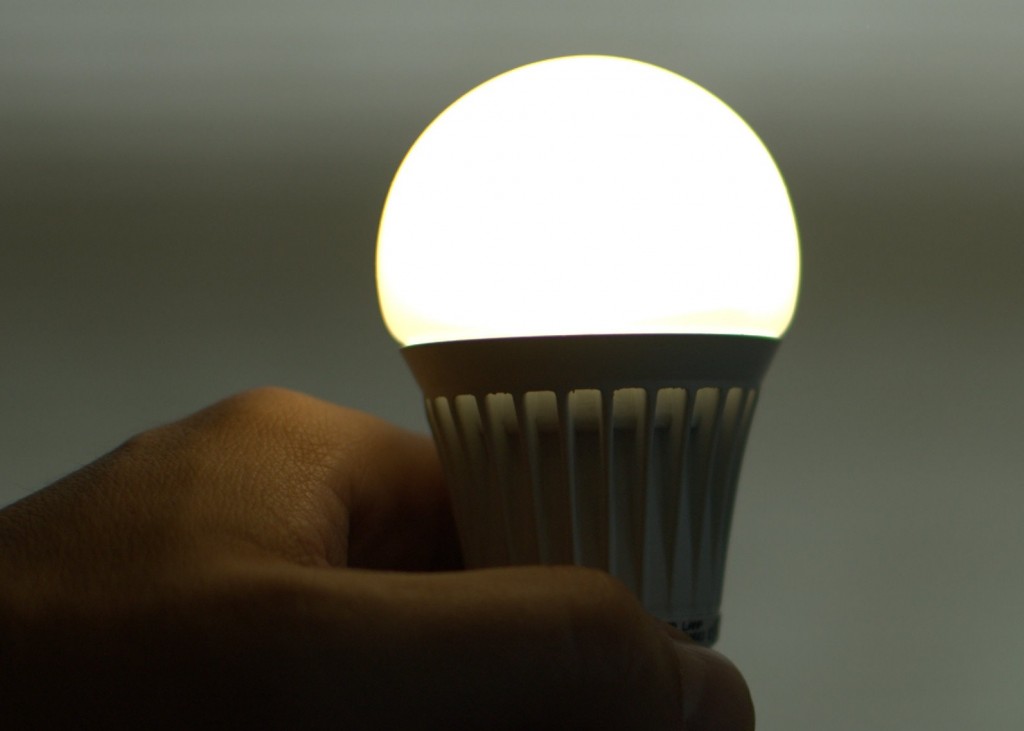LED Lights Are Set To Go Down In Price By 2015
Posted by Richard Clarke on 27th Feb 2012
 In today’s modern technological society, change is inevitable, and whether it’s for good or ill and whether we like it or not, the march of progress continues apace.
In today’s modern technological society, change is inevitable, and whether it’s for good or ill and whether we like it or not, the march of progress continues apace.
Many people bemoan change, thinking back to the ‘good old days,’ but when it comes to lighting in general, and the switch to LED in particular, these reminiscences are based on a view through distinctly rose-tinted glasses.
The Big Phase-Out
Since around 2005, governments all around the world have begun to realise that traditional lights such as incandescent filament bulbs and CFLs (Compact Fluorescent Lamps) are too profligate to be viable, and massive contributory factors in the depletion of our rapidly-dwindling natural resources.
Drastic and controversial measures have been taken to phase out the old-style 40 watt, 60 watt, 75 watt and 100 watt incandescent bulbs, in favour of more energy-efficient light sources such as LEDs.
Indeed, Brazil and Venezuela began to phase out their incandescent bulbs way back in 2005, with Switzerland and Australia following suit in 2009.
Here in the UK the big switch to LED lighting across the board hasn’t been implemented yet, but you can be absolutely sure that it will be in the not-too-distant future, as the 23rd of June 2010 report from the Science and Environment Section of The House of Commons illustrates.
Market Forces Drive Down Prices
What this will mean is that, as the previously much more costly, but way more energy-efficient LED bulbs begin to be adopted world-wide, demand will soar dramatically, thus driving down the price as levels of production and competition increase.
According to VantagePoint Capital Partners of Silicon Valley, the US hotbed of innovative forward-thinking technology, the price of LED Lighting could be reduced by as much as 90% by 2015, as a much larger share of the $40 billion a year global lighting market will be opened up to LED manufacturers.
There were approximately 2.7 billion light bulbs used in the US in 2011, 1.7 billion of which were of the incandescent variety. At present, LED Lighting only constitutes 1% of the existing market, but within the next 5 years this is expected to grow to more than 50%, and even more as the phase-out continues. That means over a billion LED light bulbs will be installed in homes across the US.
LEDs Are Already Taking Off
GU10 LED bulbs are already beginning to show positive trends, becoming the best-selling like-for-like replacements for halogen and incandescent bulbs.
One of the many reasons for this is that the traditional incandescent bulb loses about 90% of its energy as wasted heat, whereas an LED light bulb like the GU10 LED 80 SMD 3.3W converts almost all of its energy directly into light, requiring 15 x less energy to produce the same number of lumens of brightness as a 50 watt conventional bulb.
Like all LED bulbs across the board, this energy-efficient LED bulb has a massively extended life-expectancy in comparison with its incandescent counterpart.
Indeed, its 50,000 hour expected lifespan, based on an 8 hour working day, will ensure it’s still working perfectly well in over 17 years, by which time you can expect to have replaced your incandescent bulbs more than 20 times!
LED efficiency is continuing to improve in leaps and bounds, increasing the number of lumens per watt from 60 to 100 in just the last few years. In line with this, they’re expected to achieve 150 lumens per watt by the year 2020 and beyond that, the sky’s the limit!
So, whether you’re a fan of change or not, you have to agree that sometimes it’s a good thing. LED lighting is an example of how new ways of thinking about such a basic human requirement can bring about radical and positive changes.
As Albert Einstein once said, “You can never solve a problem with the same kind of thinking that created the problem in the first place.”
He wasn’t often wrong!





